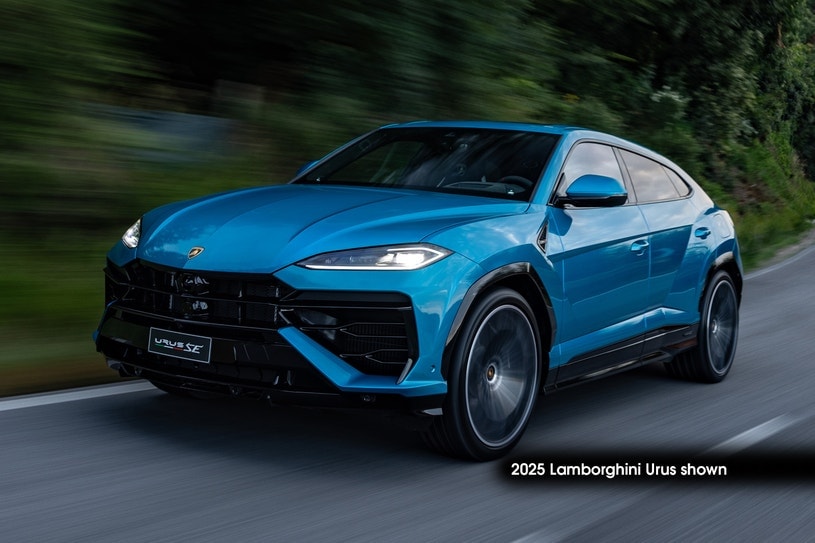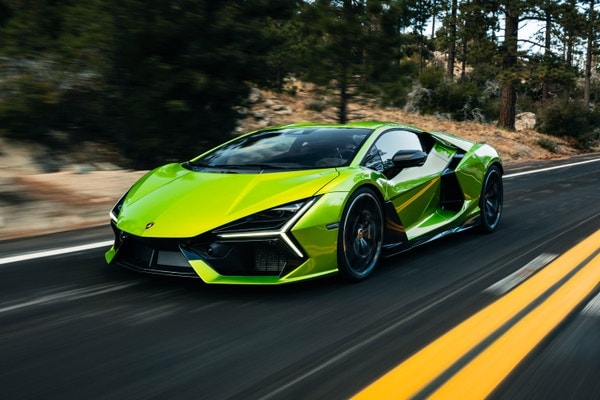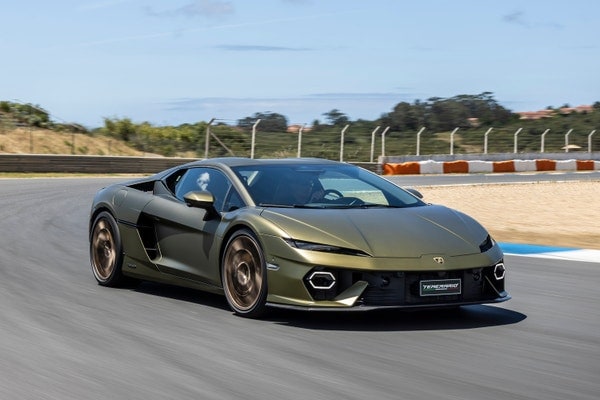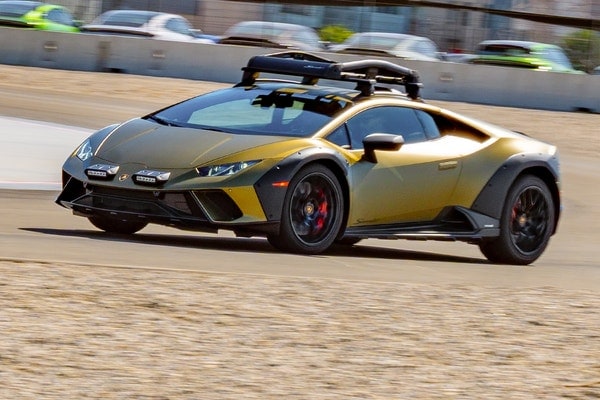Overview
The time for being offended by the notion of a hybrid Lamborghini has passed, as both of the brand's supercars leverage electric assist to achieve outputs that were inconceivable just a few years ago. One could still choose to balk at a plug-in hybrid Lamborghini SUV, but where do you think the money comes from to develop 900-horsepower and 1,000-horsepower supercars? And the Urus SE's PHEV powertrain doesn't just give this Lambo the ability to creep around on electric power for 35 miles; it produces a brand-appropriate 789 horsepower and a 0-62 mph time just 0.1 second slower than the outgoing gas-only Urus Performante.
Edmunds spotlight: Techno overflow
3.4 seconds. That's how quickly the Urus SE hits 62 mph. But the Urus SE's use of the latest automotive tech isn't limited to straight-line speed. It also boasts an air suspension (capable of lifting the SUV an impressive 3 inches in the off-road modes), adaptive dampers, 48-volt active anti-roll bars, a torque-vectoring rear differential and rear-wheel steering. Oh, and it gets a larger 12.3-inch touchscreen infotainment system with updated software.
Competitors to consider
"The purist's 700-hp exotic SUV" is an odd badge to wear, but without a doubt it belongs to the Ferrari Purosangue, which generates its 715 horsepower in the time-honored tradition of Italian automakers: by spinning a big V12's crankshaft really fast. Aston Martin's DBX707 also plays in this arena; its AMG-derived twin-turbo V8 tops out at a mere 697 horsepower, but its claimed 0-60 mph time is 0.3 second lower than the Urus'. The Porsche Cayenne Turbo E-Hybrid uses a version of the Urus SE's powertrain, and now that the setup has appeared in the Bentley Continental, it's only a matter of time before there's also a 789-hp plug-in hybrid Bentley Bentayga.




